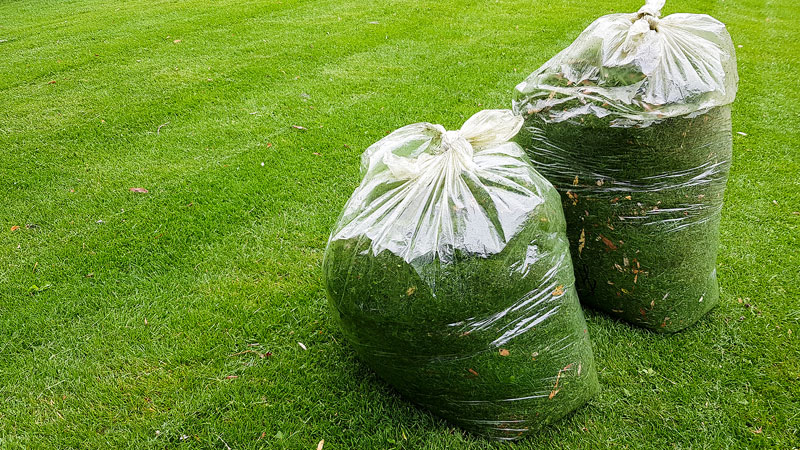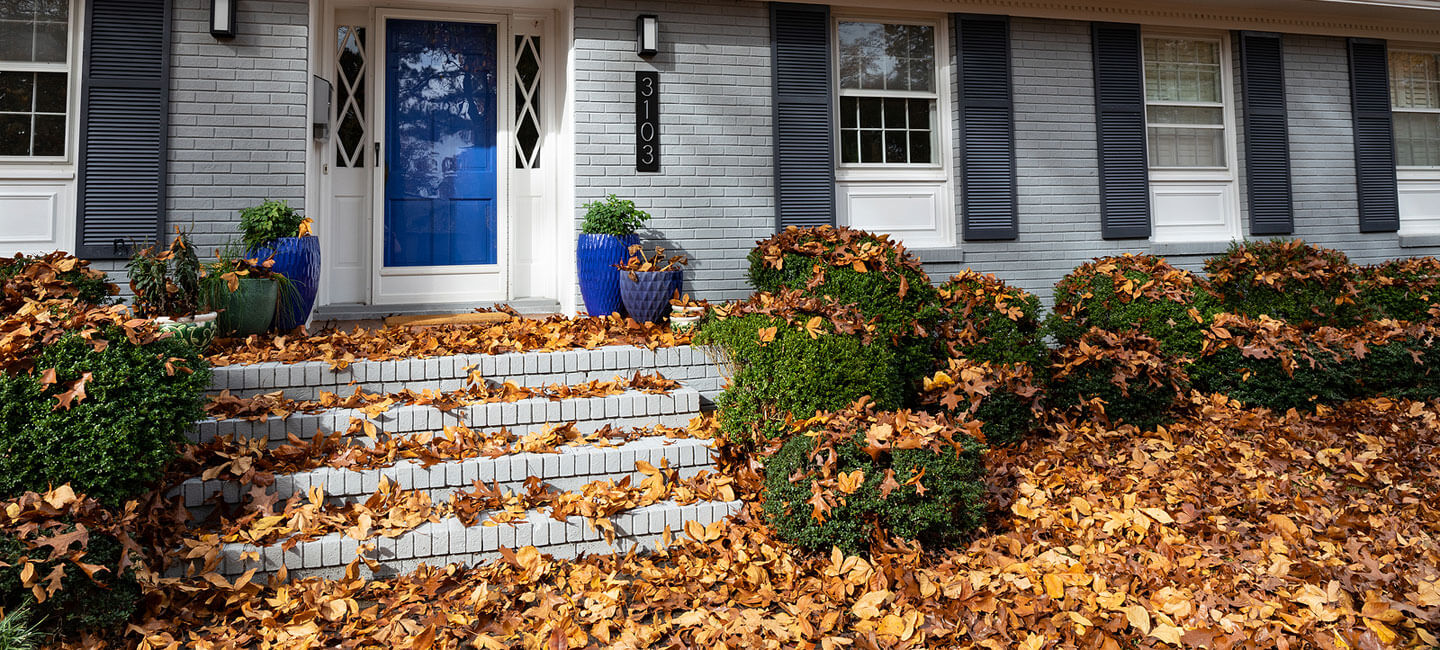A lush and healthy lawn looks beautiful. If you want to achieve a lush and beautiful lawn, overseeding is the best way to do so. Overseeding is a lawn care process that spreads grass seed over an existing lawn.
Overseeding the lawn will help in filling thin or bare patches of the lawn. It will also help reduce weed invasion. You will be able to improve the color and look of the lawn with overseeding.
Thinning is normal as grasses mature. This is especially true if you use the lawn often. A blade of grass lives only 45 – 60 days.
Overseeding will keep the lawn looking lush and green without you having to start from scratch. Starting from scratch often involves a lot of work.
If the lawns are not overseeded at regular intervals, they will grow unhealthy and thin. This makes it easier for the weeds to overtake the lawn. Within no time the lawn will look barren and unkempt.
The basics of overseeding are the same for all types of lawns. Whether you are landscaping for the first time or have many years of experience, learning how to overseed will help improve the results.
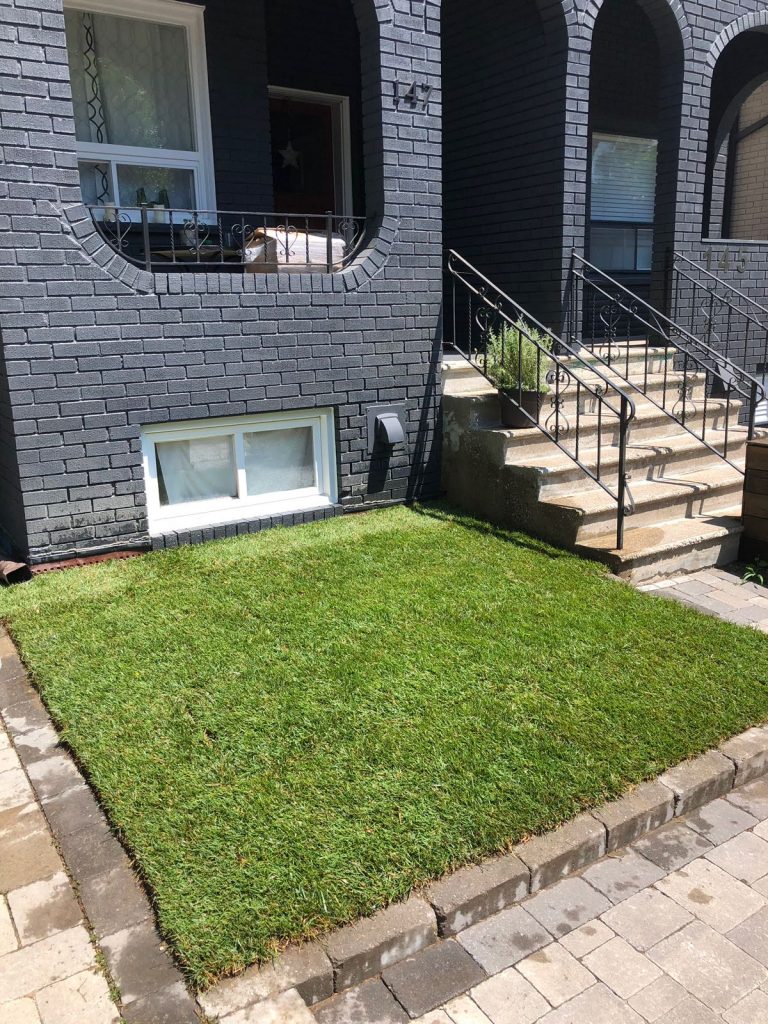
Basic Guide to Overseeding the Lawn
Establish Goal and Time the Task
Most homeowners overseed to correct thin lawns. Commercial lawn care professionals overseed to prevent thinning. The best time to overseed the lawn is the month of September.
If you are unable to do so in September, you can choose to do it in early spring. Autumn and spring are often the best time to overseed the lawn. Grass seeds germinate and grow best when the daytime temperature is around 50°F.
If the overnight temperature creates heavy frost, germination is not possible. The seeds take one to three weeks to germinate.
Prepare the Lawn Area
If weeds are present, you will need to get them removed. Spray the lawn with weed killer. Choose a weed killer that only kills the weed and not the grass.
It is best if you do this process at least two weeks before you begin the overseeding process. Removing weeds is important as it would affect the growth of new grass.
Mow the lawn to prepare the area. Remove the clippings and mow the lawn extra short. This will help the new seeds to get access to sunlight and water. If you are overseeding to improve the quality of the lawn, a soil test is recommended.
Test the soil so that you can correct existing lawn problems. Make the corrections before overseeding. The soil test will also help in determining the pH level of the soil.
Even though soil testing is not essential for the overseeding process, it will be the difference between a successful process or a waste of time. The nutrient balance of the soil can be adjusted based on the results of the soil test.
Depending on the type of soil in your lawn, you can choose to use different methods to loosen the soil. The different options that are used to loosen the soil include aerating, rototilling, and heavy raking.
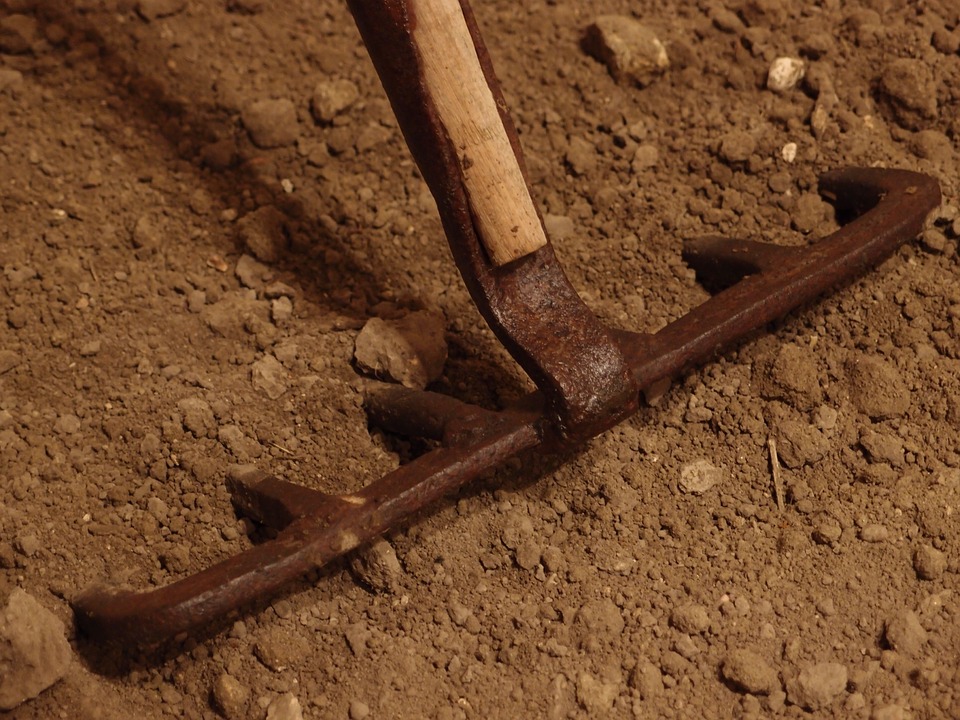
Choosing the Correct Lawn Seed
It is important that you choose the correct lawn seed for overseeding. Gain knowledge about the different grass types you already have on the lawn. Based on this information, you will be able to make the right choice of lawn seed.
You may have to choose different seed mixes for different areas of your lawn. The layout of the lawn is also considered when choosing seeds. You can choose to overseed specific areas of the lawn or the entire lawn.
Does the soil drain well? Is the lawn shaded in some areas? What is the appearance you want to achieve? All these aspects are often taken into consideration when choosing lawn seeds.
Spread a Thin Amount of Topsoil
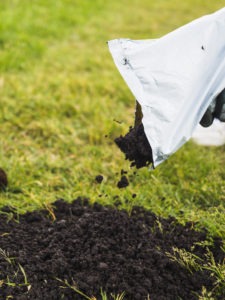
use the shovel to throw some soil on your lawn and spread it evenly using a leaf rake.
Spread the Seed
A quality grass seed product will yield better lawns. Always choose quality grass seeds that are recommended for the regional climate in your state. Spread the grass seed evenly over the lawn.
Based on the size of the lawn, you should use the amount of seed specified on the seed packaging. Follow the instructions correctly for a green and healthy lawn.
Spread the seed by hand. You can also choose to do so using a drop spreader or a rotary spreader if the lawn is large. Choose any method you want to evenly distribute the seeds.
Divide the lawn into different areas, so that you are able to evenly spread the seed. You can choose a specific area to spread the seed. This will ensure that you cover all the area of the lawn.
Walk in a single direction when spreading the seed. When you walk in different directions you will not be able to cover the entire lawn in a proper manner. If you have a small lawn, it is best to use a rotary or drop spreader.
Drop spreaders will drop seeds directly below the spreader. Ensure that you walk in a straight line when using a drop spreader. Broadcast speeders are an ideal choice if you have a large lawn.
Broadcast speeders are available in different sizes. You can make the choice depending on the size of the lawn. Always spread the seed when there is just a small breeze. If you spread the seed in windy conditions, it will not distribute evenly.
Choose seeds that blend well with the existing lawn. Stay away from cheap brands of seeds. Rake the seeded area. This will help the seeds settle on the soil. The seeds should be sown evenly across the lawn area.
Most homeowners tend to get confused about whether they need to cover or not cover the seeds when overseeding the lawns. In most cases, the existing grass provides cover and shade.
If the lawn is poorly maintained and exposed, the soil will have to be raked to cover the seeds. If you want to spread compost, you should first compost and then seed. This ensures that the seed is not buried too deep. If the seed gets buried too deep, it will not get germinated.
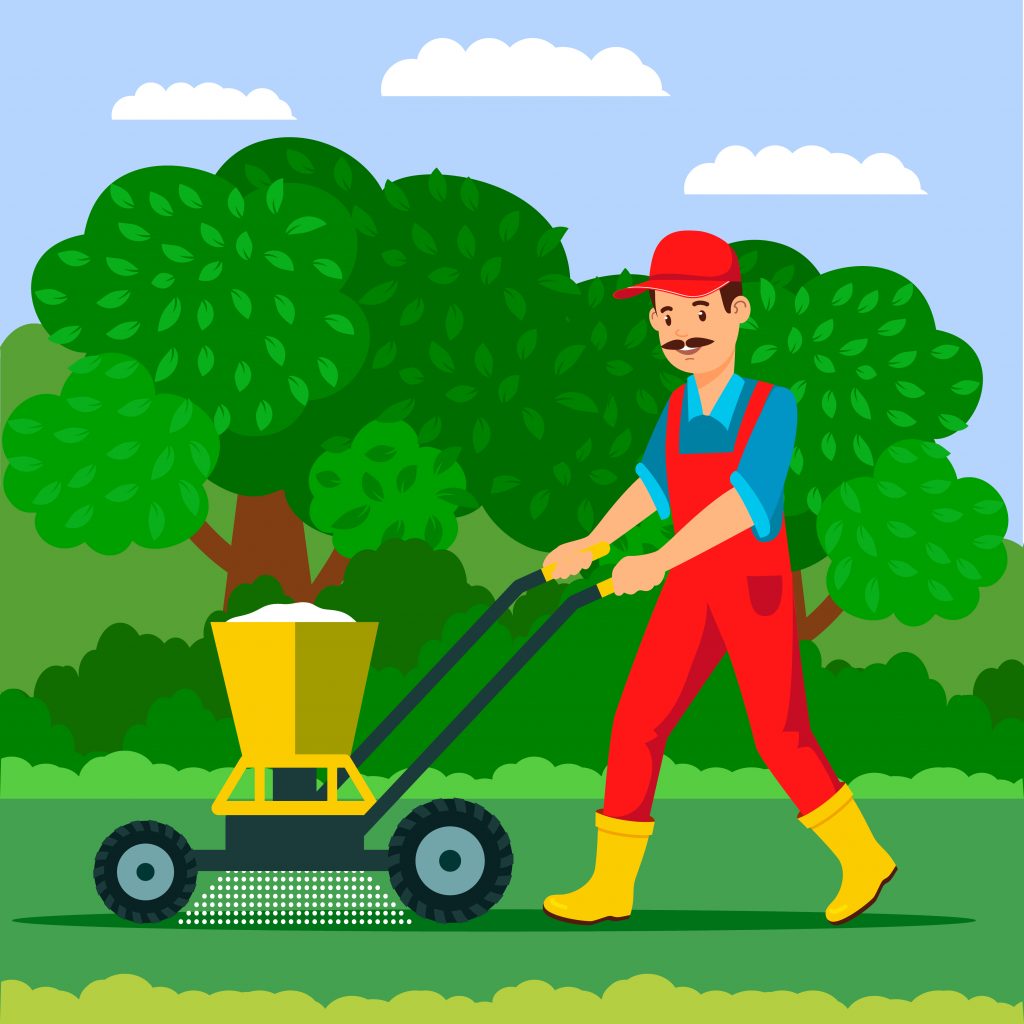
Fertilize the Lawn
The next step is to fertilize the lawn. Fertilizers will help deliver essential nutrients to the grass. The fertilizer that you choose to use should be appropriate for your lawn. The different lawn conditions are best determined with a soil test.
When overseeding lawns, apply a starter fertilizer after or before seeding. This should be done if the soil test indicates a low pH level. Starter fertilizers usually contain higher amounts of phosphorous.
Phosphorous helps with root growth whereas nitrogen will help with greening and top growth. Phosphorous lawn fertilizers are restricted in some states due to environmental concerns. It is best to check with the local county about fertilizer application restrictions.
Avoid overuse of nitrogen fertilizer. If you use too much nitrogen, it will burn the new seedlings and germination. Use only the recommended quantity of fertilizer for the lawn.
The amount of fertilizer you use will depend on the size of the lawn. If you have a small lawn, you should avoid excessive use of fertilizers. This can be harmful to the soil and the grass seedlings.
Recommended Reading: Bringing Life Back To Your Lawn With Easy Lawn Care Tips
Water the Lawn
Water the lawn immediately after you complete the overseeding process. It is best to water the lawn at least three to four times daily. New overseeded lawns need constant moisture. Moist soil and seeds create the ideal conditions necessary for germination.
Keep the lawn well-watered for at least the first few weeks. This will ensure proper germination and growth. The seeds should never get completely dried out. If you live in dry weather or a sunny location, you should water more.
When the grass seed is well established you can choose to water the lawn less. Too much water after germination will kill the grass seedlings.
The amount of water that you need to provide will often depend on the weather condition in your state. If you live in a hot and dry area, you will have to water the lawn at regular intervals.
Recommended Reading: Why A Watering Schedule Is Important For Any Lawn Care Plan
Regular maintenance will keep the newly seeded lawn looking its best. A regular maintenance plan includes proactive overseeding, best mowing practices, and diligent watering. This will help in keeping the lawn lush.
If your lawn has lost most of its green cover and you need an instant lawn, sodding will help solve the problem. Sod installation is easy and requires less irrigation. The process will help you get a green and fresh-looking lawn immediately.
If you want to keep your lawn healthy, you will need to follow a maintenance schedule. Don’t wait to overseed until the lawn loses all its green cover. If you follow the step-by-step process of overseeding and fertilizing the lawn, you will be able to get the lawn of your dreams.
It is advisable to seek professional landscaping advice and help if you want your lawn looking it best. Get the best lawn in the neighborhood without much of an effort. This will also mean less work for you.
Professional Lawn Care Services
My Landscapers provides professional lawn care services across Toronto, Markham, Vaughan, Newmarket, Richmond Hill, and Mississauga. We have been providing lawn maintenance services both commercially and residentially for over 14 years. Take advantage of our expertise and request a FREE estimate today! We provide a no-obligation, complimentary estimate on available lawn care services. Read our customer testimonials or browse through some of our recent lawn care projects. We go to extra lengths to make our customers happy!
Read Also: Do I Need To Hire A Professional Lawn Care Service?

